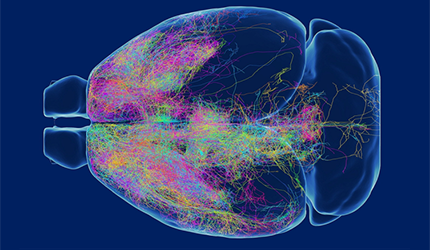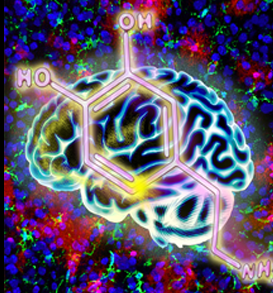
“A circuit from the ventral subiculum to anterior hypothalamic nucleus GABAergic neurons essential for anxiety-like behavioral avoidance” was published in Nature Communications on December 3, 2022. This study was performed by researchers in Dr. XU Xiaohong’s Lab at CEBSIT
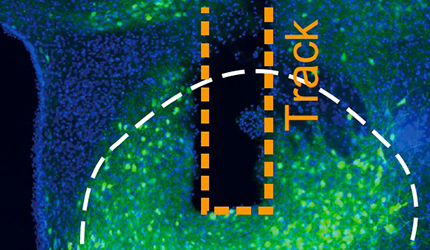
A recent study published in Nature Neuroscience demonstrated that selective retrosplenial cortex activation encodes and regulates the two-stage rapid eye movement sleep (‘REM sleep’). This work was performed by researchers in Dr. LIU Danqian’s Lab at CEBSIT. This research lays foundations for understanding cognitive process and regulatory mechanism of spontaneous cortical activation during REM sleep.

A recent study published in Neuroscience Bulletin developed a high-performance virtual reality platform which is assembled from modular hardware and custom-written software with upgradability, providing a more economical and flexible tool for context-dependent cognitive research in rodents. This work was performed by researchers in Dr. XU Chun’s Lab and Dr. WenYunqing at CEBSIT, researchers in Dr. HE Hua’s group and researchers in Dr. LIU Yu’s lab.

A recent study published in Neuropsychopharmacology demonstrated that the dopamine D2/3 receptor agonist pramipexole modulates the fronto-subthalamic pathway during sequential working memory. This work was performed by researchers in Dr. YE Zheng’s Lab at CEBSIT and Prof. Thomas MUENTE’s team at the Department of Neurology, University of Lübeck.
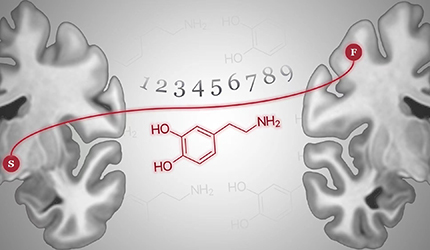
A recent study published in Neuroscience Bulletin reveals that interval timing behavior is adaptive to recent experience of temporal interval and neuronal activity in the anterior lateral motor cortex (ALM) contributes to the short-term memory of time interval. This work was performed by researchers in Dr. YAO Haishan’s Lab at CEBSIT.

A recent study published in Nature Communications by GU Yong’s lab at CEBSIT reveals causal contributions of the macaque extrastriate visual cortex in optic flow based roll perception. In this study, with extracellular electrophysiological recording and electrical microstimulation in awake, behaving macaques, the researchers provide direct evidence showing that roll signals in macaque extrastriate visual cortex causally contribute to rotation perception around line-of-sight.
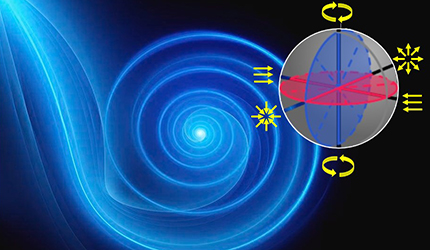
A recent study published in Nature Biotechnology revealed the development of high-fidelity Cas13 variants with markedly reduced collateral effects by mutagenesis and demonstrated the feasibility of hfCas13 for efficient on-target RNA degradation with almost no collateral damage in mammalian cells and animals. This work was performed by researchers in Dr. YANG Hui’s Lab at CEBSIT and R &D team from HuiGene Therapeutics Co., Ltd. The researchers further engineered Cas13X and obtained hfCas13X variant exhibiting high specificity of on-target RNA degradation but minimal collateral effects. hfCas13X will show great application potential in the field of gene therapy based on RNA editing.
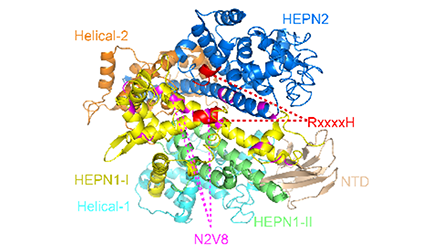
On August 5, 2022, a study published in PNAS reveals the genome-wide chromatin accessibility of neonatal cochlear hair cells (HCs) and has identified two previously unknown Atoh1 enhancers. This study demonstrates that three Atoh1 enhancers cooperate for cochlear HC development in a dosage-dependent manner. The discovery provides insights into the molecular mechanisms underlying Atoh1 expression regulation and novel potential therapeutic targets for HC regeneration. This work was performed by researchers in LIU Zhiyong’s lab at CEBSIT, and the research group of LU Falong at IGDB.
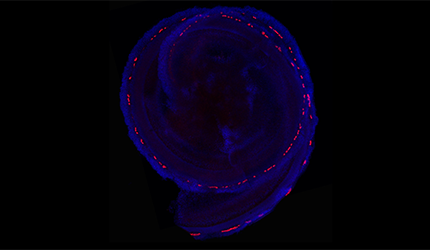
A recent study published in Journal of Experimental Medicine demonstrated that astrocytic dopamine receptor D2 (DRD2) plays a key role in the pathogenesis of multiple sclerosis (MS). This was a collaboration between research groups led by Professor ZHOU Jiawei from CEBSIT and Professor LIANG Xinmiao.this study reveals previously uncharted mechanisms of disease pathogenesis and raises the possibility that blockade of DRD2/PTS signaling in astrocytes could provide therapeutic benefit in autoimmunity diseases such as MS.
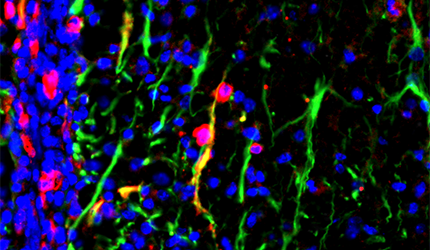
A recent study published in Nature Communications developed novel molecular tools to specifically define cell types with multiple features in the brain, and demonstrated the utility of these intersectional tools in neural manipulations and recording. This work was performed by researchers in Dr. XU Chun’s Lab at CEBSIT and Dr. LONG Gang’s lab at the Institut Pasteur of Shanghai, Chinese Academy of Sciences. This work has successfully developed new molecular tools for labeling, recording, and manipulating multi-feature neurons, revealed the relationship between the projection patterns and emotional coding of ventral hippocampal neurons, and provided a more precise and versatile toolset for studying structures and functions of complex neural circuits.

A recent study published in Neuroscience Bulletin demonstrated that missense mutations in PiT2-loop7 causes inorganic phosphate (Pi) dyshomeostasis by affecting the phosphorylation-regulated cell-surface localization of PiT2. This study was jointly completed by Dr. LIU Jing yu’s lab and ZHU Shujia’s lab at CEBSIT. This work revealed the importance of the phosphorylation of PiT2-loop7 in the physiological functions of PiT2 and uncovered the underlying mechanisms by which the missense mutations in PiT2-loop7 lead to primary familial brain calcification (PFBC), opening up a new avenue of a research in PFBC therapy.
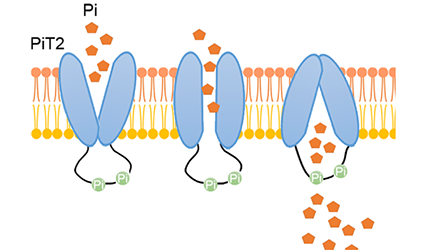
A recent study published in Cell Metabolism reported a specific cluster of neurons in ventromedial hypothalamus (VMH) expressing preprodynorphin(Pdyn) could control homeostatic thermogenesis and social interaction- associated hyperthermia. This work was accomplished by Dr. ZHANG Zhe’s lab, Dr. LIANG Zhifeng’s lab and Dr. XU Xiaohong’s lab at CEBSIT. This research identified Pdyn-expressing neurons in ventromedial hypothalamus as a novel nucleus that not only responds to cold temperature in the environment and promotes homeostatic thermogenesis, but also modulates social interaction and associated thermogenesis.
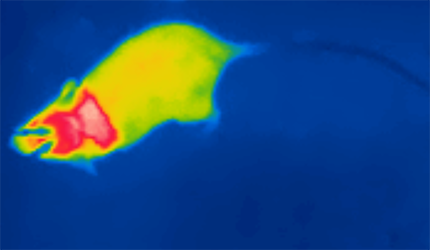
A paper published recently in Current Biology demonstrated a unique design of neural microcircuit in the ventromedial hypothalamus (VMH). This work was performed by researchers in Dr. XU Huatai’s lab at CEBSIT. This study applied combinatory approaches to reveal a distinct development transition of neural microcircuit in the VMH, which featured dense electrical coupling at the early developmental stage and sparse chemical synapses but prominent neuropeptide transmission in the adult. The absence of chemical synapse was further observed in many other hypothalamic nuclei. These findings provide a solid microcircuit basis for a better understanding of hypothalamic functions.

A recent study published in eLife demonstrated that non-human primates (rhesus monkeys) can play the video game Pac-Man with complex heuristic behavioral strategies. This work was performed by researchers in Dr. YANG Tianming’s Lab at CEBSIT. The authors trained two macaque monkeys to use a joystick to play a semi-controlled version of the video game Pac-Man. The novel experimental paradigm allowed the authors to analyze and model the kinds of heuristic behavioral strategies monkeys use to solve complex problems. The results provide insights into higher cognition functions in non-human primates.

A recent study published in Nature Neuroscience reported the first release of the whole-brain projectome of over 6000 single neurons in mouse prefrontal cortex (PFC), the largest database of whole-brain single-neuron projectome of mouse to date. Through comprehensive analysis, this study identified 64 projectome-defined neuron subtypes in the mouse PFC and their spatial organization, the modularity and hierarchy of intra-PFC connectivity, and the correspondence between transcriptome-defined and projectome-defined neuron subtypes. The study established a comprehensive single-neuron projectome of mouse PFC, systematically studied the internal connectivity and the efferent projection patterns of PFC, and proposed a working model of the PFC, thus providing a structural basis for the neural mechanisms of high-level cognitive functions of the PFC. The study also established the pipeline for future studies of whole-brain mesoscopic projectome in model organisms.
